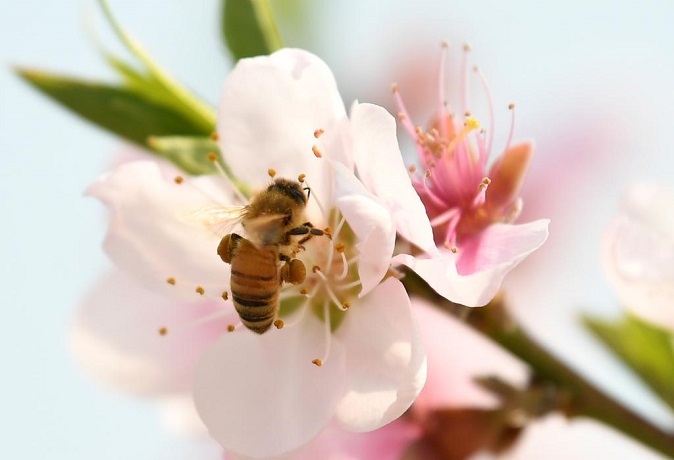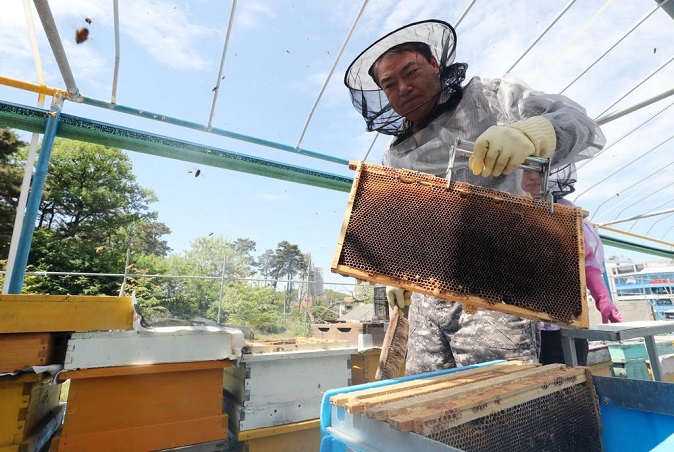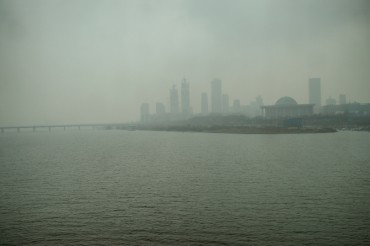
A bee collects pollen from peach flowers in full bloom at an orchard in Chuncheon, 85 kilometers northeast of Seoul, on April 18, 2022. (Yonhap)
SEOUL, May 19 (Korea Bizwire) — Large fields of flowers and trees play a crucial role in preventing bee die-offs in South Korea, a study indicated Thursday.
A joint report by international environmental group Greenpeace and Andong National University has revealed that the most significant threat to bee survival is climate change.
The report highlights that due to a global temperature increase of 1.09 degrees Celsius over the past 200 years, flowers bloom and wither before bees emerge from hibernation.
It further notes that springtime flower blooming has advanced by three to nine days compared to the period from 1950 to 2010.
The report emphasizes that warmer winters and abnormal weather conditions are critical factors affecting hibernating bees.
According to the Korea Beekeeping Association, 944,000 out of all beekeeping hives, which house around 15,000 to 20,000 bees per hive, have experienced bee die-offs.
This suggests that the estimated number of dead bees ranges from 14.1 billion to 18.8 billion.
The decline in nectar sources, which are vital for providing pollen and honey to bees, also poses a threat to bee survival.

A bee farmer removes a frame full of acacia honey from a beehive at his honey farm in Cheongju, central South Korea, on May 12, 2022. (Yonhap)
The report states that resolving bee die-offs would require approximately 300,000 hectares of nectar sources.
Approximately 1 hectare of bee plants can produce around 300 kilograms of honey.
For a single bee to hatch, it requires more than 300 milligrams (mg) of honey and 130 mg of pollen.
Within a single beehive box, which houses around 20,000 bees, approximately 150,000 bees hatch each year, given their average lifespan of 1.5 months.
However, there are more than 2.5 million bee colonies managed by bee farms.
Even if these 2.5 million beehives collect only half of their consumed honey from natural nectar sources, they would still require 250,000 hectares of bee plants capable of producing 300 kilograms of honey per hectare.
In South Korea, there are currently 153,381 hectares of bee plant forests.
The National Forest Service aims to establish 150 hectares of bee plant forests this year, indicating that securing 300,000 hectares of nectar sources would take several decades.
H. M. Kang (hmkang@koreabizwire.com)






